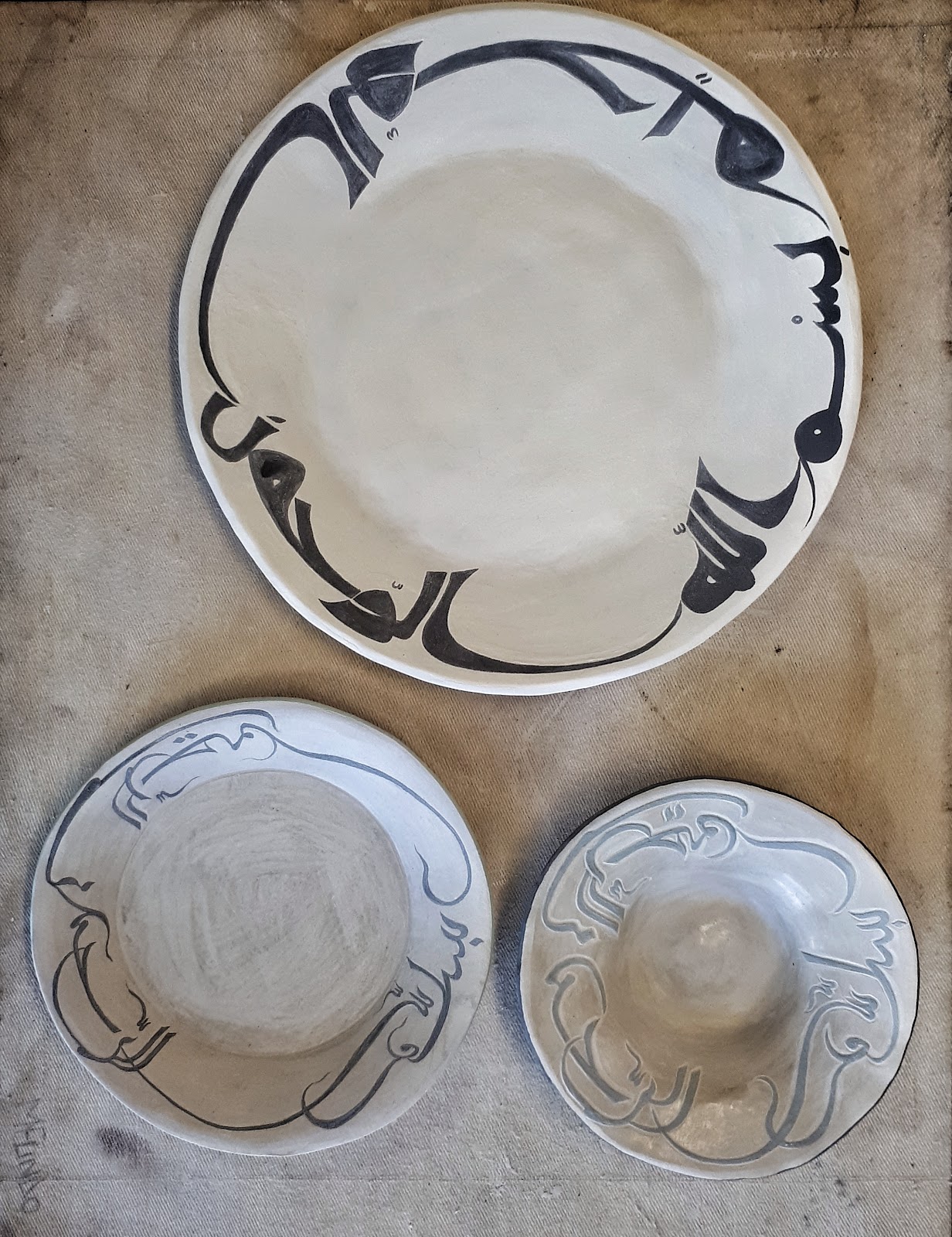 |
| Figure 3.25 - Adams, Z., (2018) Ceramic bowls with Arabic Calligraphy written on them. |
The bowls in this collection are made from stoneware clay and has blue and green glaze applied to it. These pieces made reference to Arabic calligraphy and antique Islamic ceramic bowls. On all three bowls, the inscriptions around the edges are a testimony of faith, which reads, "In the name of Allah, the most gracious, the most merciful".
 |
| Figure 3.26 - The Metropolitan Museum of Art, (2019). Bowl with Arabic Inscription. |
These pieces served as a form of spiritual mediation for me. The message I took from the bowl in figure 3.26, is that the Arabic inscription, written in a circular manner, creates a text is endless. The deeper message that I understood from my pieces is that if you begin a thing with Allah in mind, knowing that he is the most gracious and the most merciful, then surely He will be gracious and have mercy on you regarding what follows.
This form of Islamic art is identified by majority of Muslims simply because the holy book, the Quran, is originally in Arabic. Artists chose certain versus from the Quran which hold a special meaning and wrote it out in a stylized manner.
This is why one will find Calligraphy on walls of buildings, paintings, utensils, jewellery, ceramics and other forms of art. It is also found in different parts of the Islamic world in styles specific to that region.
This beautiful form of art can be carried gracefully through jewellery, the challenge is figuring out just how...




